In an era where employee expectations are rapidly evolving, fostering a workplace where staff feel valued and heard is paramount. An employee listening programme is a strategic tool that enables organisations to tap into their workforce’s thoughts, needs, and concerns in real time. This article provides a detailed guide for HR teams, covering what an employee listening programme is, how to create one, its distinction from engagement surveys, methods to measure its impact, and the top tools available in 2025 to support such initiatives. Written in UK English, this guide is crafted to feel fresh, authoritative, and practical, offering actionable insights for building a thriving workplace culture.
What Is an Employee Listening Programme? A Simple Guide for HR Teams
An employee listening programme is a continuous, structured initiative designed to collect and act on employee feedback across their entire journey with an organisation. Unlike sporadic surveys, it’s a dynamic process that uses multiple channels—such as short pulse surveys, focus groups, one-on-one discussions, and digital feedback platforms—to capture real-time insights into employee sentiment, challenges, and aspirations. The aim is to foster an open, two-way dialogue that empowers employees to share their voices while enabling leaders to make informed, timely decisions to enhance the employee experience (EX).
At its heart, an employee listening programme is about building trust. It signals to employees that their opinions matter, whether they’re sharing ideas for improving workplace culture, expressing concerns about work-life balance, or suggesting innovations. For example, a well-executed programme might reveal that junior employees feel disconnected in a hybrid work setup, prompting targeted mentorship initiatives. By prioritising regular feedback, organisations can address issues before they escalate, boost morale, and align employee needs with business goals.
This approach is especially vital in today’s fast-paced, often remote or hybrid work environments. Employees increasingly seek flexibility, purpose, and a sense of belonging. A listening programme ensures organisations stay attuned to these evolving expectations, creating a workplace where staff feel valued and motivated. Ultimately, it’s about turning feedback into a catalyst for positive change, driving engagement, productivity, and retention.
5 Steps to Create an Effective Employee Listening Programme
Creating a robust employee listening programme requires careful planning and execution. Below are five detailed steps to ensure success, each designed to build a sustainable, impactful strategy:
Define Clear Objectives Aligned with Organisational Goals
Begin by identifying what you want to achieve. Are you addressing specific challenges, such as high turnover, poor collaboration, or inclusivity gaps? Or do you aim to enhance overall employee satisfaction? Link these objectives to your broader business and people strategies. For instance, if your organisation is undergoing a digital transformation, your listening programme might focus on gathering feedback about new tools or training needs. Clear objectives ensure you collect relevant data and avoid overwhelming employees with irrelevant questions.
Secure Stakeholder Buy-In and Build a Cross-Functional Team
A successful programme needs support from key stakeholders, including senior leadership, HR, IT, legal, and communications teams. Leadership endorsement lends credibility, while IT ensures technical infrastructure (e.g., secure survey platforms) and legal teams safeguard data privacy. Engage line managers to champion participation and model open communication. For example, communications teams can craft compelling messages to encourage feedback, while HR can translate insights into actionable policies. A collaborative approach ensures the programme is well-resourced and aligned across departments.
Select Diverse Feedback Channels
Use a mix of tools to capture feedback comprehensively. Short, frequent pulse surveys (e.g., weekly or monthly) are ideal for quick insights, while focus groups provide qualitative depth. One-on-one check-ins between managers and team members foster personal dialogue, and digital platforms allow anonymous submissions for sensitive topics. To prevent survey fatigue, keep questions concise and relevant—aim for no more than five questions per pulse survey. For instance, a retail company might use pulse surveys to gauge frontline workers’ experiences with customer-facing tech, while office-based staff might prefer focus groups to discuss team dynamics.
Prioritise Privacy and Transparent Communication
Employees must trust that their feedback is confidential and won’t lead to repercussions. Use anonymous surveys and secure platforms to protect identities, and clearly communicate how data will be used. For example, explain that feedback will inform policy changes or training programmes, not individual performance reviews. Transparency builds trust—share what you’re measuring, why, and how results will drive action. If employees express concerns about workload, outline steps like hiring additional staff or redistributing tasks, reinforcing that their input matters.
Act Swiftly and Monitor Progress
The true value of a listening programme lies in action. Analyse feedback promptly using analytics tools to identify trends, then implement targeted solutions. For example, if feedback highlights a lack of career development opportunities, introduce mentorship schemes or online training modules. Share outcomes with employees through regular updates, such as monthly newsletters or townhall meetings, to show their feedback drives change. Continuously monitor the effectiveness of actions through follow-up surveys or KPIs like engagement scores, ensuring the programme remains dynamic and responsive.
Employee Listening vs Engagement Surveys: What’s the Difference?
The table below outlines the key differences between employee listening programmes and engagement surveys, highlighting their distinct approaches to gathering and acting on employee feedback.
Aspect | Employee Listening Programme | Engagement Survey |
Frequency & Continuity | Ongoing, with frequent touchpoints like weekly or monthly pulse surveys (3–5 questions) and real-time feedback portals. Enables rapid response to emerging issues, such as addressing remote workers’ tech challenges during a system rollout. | Annual or biannual, providing a broad snapshot of employee sentiment. Typically involves 20–50 questions, with analysis taking weeks, limiting responsiveness to immediate concerns. |
Depth & Flexibility | Combines quantitative data (e.g., survey scores) with qualitative insights (e.g., free-text comments, focus group discussions). Adaptable to current priorities, such as tailoring questions to onboarding issues or hybrid work challenges. | Offers high-level insights into satisfaction and culture but lacks granularity. May identify low morale without pinpointing causes, limiting actionable outcomes. |
Employee Involvement | Fosters two-way dialogue, empowering employees to suggest solutions via digital platforms. For example, a tech firm’s feedback portal might allow staff to propose process improvements, enhancing ownership. | Top-down approach with predefined questions, limiting employee input to responses. Employees have little influence over survey design or follow-up actions. |
Impact on Action | Prioritises rapid, targeted interventions. For instance, feedback about meeting overload could lead to a “no-meeting day” policy within weeks, building trust through visible change. | Actions are often delayed or generic due to infrequent data collection. Employees may perceive limited impact, reducing trust in the process. |
This comparison underscores that employee listening programmes act as a continuous pulse, enabling agile, employee-driven improvements, while engagement surveys serve as a periodic health check with broader but less immediate impact.
How to Measure the Impact of Your Employee Listening Programme
Measuring the success of your employee listening programme ensures it delivers value and justifies investment. Here are six key metrics and methods to evaluate impact, with practical examples:
Participation Rates
High participation signals trust and engagement. Track response rates for surveys, focus group attendance, or platform usage. For example, a 90% response rate to weekly pulse surveys suggests employees feel safe sharing feedback. Low rates may indicate distrust or survey fatigue, prompting a review of question design or communication.
Engagement Metrics
Measure changes in engagement scores, such as satisfaction, sense of purpose, or belonging, derived from pulse surveys. For instance, if scores rise after introducing flexible working hours based on feedback, the programme is likely effective. Benchmark against industry standards to contextualise results.
Retention and Turnover Rates
Compare turnover rates before and after implementing feedback-driven changes. If feedback reveals poor work-life balance and subsequent policy changes (e.g., part-time options) reduce turnover by 10%, the programme is delivering results. Track voluntary resignations specifically, as they often reflect employee sentiment.
Action Implementation Speed
Assess how quickly feedback translates into action. For example, if a survey highlights outdated software frustrations and a new tool is rolled out within a month, this demonstrates responsiveness. Aim for action plans within 4–6 weeks, as delays can erode trust.
Employee Sentiment Trends
Use text analytics to identify recurring themes in qualitative feedback, such as concerns about inclusivity or career growth. For instance, if employees frequently mention feeling undervalued, track whether recognition programmes improve sentiment over time. Tools with natural-language processing can quantify these trends for deeper insights.
Business Impact
Link listening outcomes to business metrics like productivity, customer satisfaction, or profitability. For example, if feedback-driven training improves sales team performance, resulting in a 5% revenue increase, the programme has clear financial impact. Use HR analytics to correlate employee feedback with organisational outcomes.
Share these metrics transparently via dashboards or company-wide updates to reinforce the programme’s value and encourage ongoing participation.
The Best Tools and Platforms for Employee Listening in 2025
The right technology can amplify your employee listening programme, offering scalability, analytics, and user-friendly interfaces. Below are five top tools for 2025, each tailored to different organisational needs:
- Best for: Advanced analytics and enterprise-scale listening
- Features: Multichannel feedback (web, mobile, SMS), AI-driven sentiment analysis, lifecycle-based surveys, and idea-sharing forums.
- Why It’s Great: Its predictive intelligence identifies trends and recommends actions, ideal for large organisations with complex needs. For example, it can analyse feedback from global teams to tailor regional policies.
- Pricing: 30-day free trial available.
- Use Case: Perfect for enterprises seeking to integrate feedback with performance metrics across departments.
- Best for: Simple, scalable survey creation
- Features: Customisable surveys, real-time reporting, AI-assisted question design, and integrations with HR systems.
- Why It’s Great: Its intuitive interface suits organisations of all sizes, especially those new to listening programmes. It’s ideal for quick pulse surveys or onboarding feedback.
- Pricing: From £25/user/month (billed annually).
- Use Case: Great for SMEs running monthly surveys to gauge employee morale or assess new policies.
- Best for: Collaboration and intranet-based feedback
- Features: Corporate social media, feedback collection, AI-powered content recommendations, and team communication tools.
- Why It’s Great: Enhances engagement through interactive intranets, allowing employees to share ideas seamlessly. It’s ideal for fostering a collaborative culture.
- Pricing: Contact for custom pricing.
- Use Case: Suits organisations wanting to embed feedback within daily workflows, like pop-up surveys on intranet pages.
- Best for: Engaging employees through gamification
- Features: Leaderboards, challenges, performance scoreboards, and personality assessments.
- Why It’s Great: Turns feedback into fun, interactive experiences, boosting participation. For example, employees can earn badges for submitting ideas, increasing engagement.
- Pricing: From £5/user/month; 14-day free trial.
- Use Case: Ideal for creative industries aiming to make feedback a positive, team-building activity.
- Best for: Real-time communication and feedback
- Features: Channels for team discussions, direct messaging, feedback bots, and custom reactions.
- Why It’s Great: Integrates feedback into daily communication, fostering ongoing dialogue. Managers can use Slack bots to prompt quick check-ins.
- Pricing: Free plan available; paid plans from £7.25/user/month.
- Use Case: Perfect for remote or hybrid teams needing informal, continuous feedback channels.
These tools cater to various budgets and organisational sizes, from startups to global enterprises. Evaluate your needs—such as analytics depth, scalability, or integration capabilities—to choose the best fit.
Conclusion
An employee listening programme is a cornerstone of a modern, employee-centric workplace. By defining clear objectives, engaging stakeholders, using diverse channels, ensuring privacy, and acting on feedback, HR teams can create a culture where employees feel valued and empowered. Unlike traditional engagement surveys, these programmes offer real-time, actionable insights that drive engagement, reduce turnover, and enhance business outcomes. With powerful tools like QualtricsXM, SurveyMonkey, LumApps, Gamifier, and Slack, organisations in 2025 are well-equipped to build robust listening strategies. Start today, measure progress, and transform your workplace into one where every voice counts.
Need Help Putting Your Employee Listening Strategy Into Action?
While this guide outlines the tools and steps you can take, not every organisation has the time or internal resources to manage the process alone. If you’d rather focus on running your business while experts handle the research, Robust Insight is here to help. As an independent research agency, we specialise in designing and implementing employee listening programmes that turn feedback into measurable results.
✅ Get expert-led insights
✅ Ensure confidentiality and data integrity
✅ Accelerate impact with tailored recommendations
Let’s talk about how we can support your goals. Contact Robust Insight today.








